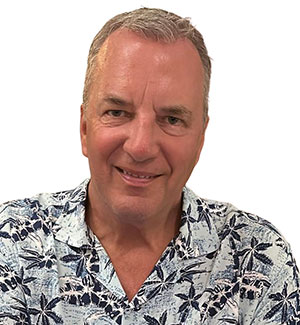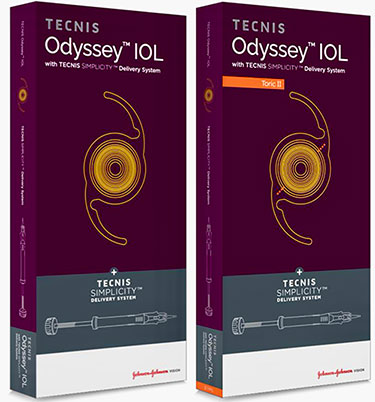- Home
- Patient Stories from Assil Gaur Eye Institute
- "Take Me Out to the Ballgame" as Steve Can Now See Thanks to the Odyssey Lens!
"Take Me Out to the Ballgame" as Steve Can Now See Thanks to the Odyssey Lens!
- Previous
- Article

As his two cataracts became intolerable, they affected every part of Steve Nuskiewicz’s life. Steve took in a Los Angeles Dodgers game and watched all-star lead-off hitter Mookie Betts take a couple of practice swings and step into the batter’s box. Steve glanced up at the scoreboard to see Mookie’s batting average — all he could see were glimmering bright lights. No detail whatsoever. No batting averages. A real strikeout.
Steven learned that no medications, eye drops, glasses, or exercises can reverse the process once a cataract reduces your vision. The only way to treat a cataract is to surgically remove and replace the damaged lens with an artificial, clear lens called an intraocular (IOL) lens. Nearly 4 million Americans undergo cataract surgery each year to restore their vision.
“Both of my eyes had gotten progressively worse,” says water conservation expert Steve, 62. “I was wearing progressive eyeglasses at the time, and once the cataracts started, the glasses were useless. I started seeing starbursts and became highly sensitive to light.”
That all changed when he visited the Assil Gaur Eye Institute, where he received the state-of-the-art Odyssey multifocal IOL by Johnson and Johnson.
What is a cataract?
A cataract is a medical condition that affects the eye, specifically the lens. The eye's lens is usually clear and transparent, allowing light to pass through and focus on the retina, which sends visual signals to the brain. The lens becomes cloudy or opaque when a cataract develops, gradually losing clear vision.
The only treatment for cataracts is eye lens replacement surgery. Cataract surgery is a standard and relatively straightforward procedure in which the cloudy eye’s natural lens is replaced with an artificial lens.
Steve’s road to regaining vision began with his optometrist
The day after the Dodger game, he called his eye doctor, who immediately saw him. It was clear that his lens opacification (cataracts) had greatly progressed, and he was referred to Assil Gaur Eye Institute (AGEI) to get expert help.
Before his first appointment at AGEI, Steve learned that he could get rid of his cataract-diseased lenses and replace them with an IOL (intraocular lens) that could eliminate his need for glasses. To say that he was intrigued would be an understatement.
After researching cataract intraocular lens options online, Steve was excited but also confused as so many types of intraocular lenses are available. “There were monofocal lenses, trifocals, light adjustable lenses, extended-depth-of-focus lenses, accommodative lenses, toric lenses to correct astigmatism, and maybe even more! I had no idea what was right for me. Needless to say, I was armed with many questions when I met with Dr. Assil,” said Steve.
Picking the perfect IOL is not for amateurs!

After all the time Steve spent researching “Dr. Google,” he was very concerned about how the right lens would be chosen for him.
“I was immediately relieved to learn that Dr. Assil developed a precise algorithm to help select the best IOL implant for each patient’s unique physical realities and lifestyles,” said Steve.
Together, they explored several types of IOL options in monofocal and multifocal lenses. Dr. Assil suggested the Johnson & Johnson Odyssey lens, a state-of-the-art Premium IOL that was nearing market release, for which he had exclusive rights to use before general release for his patients.
Dr. Assil felt the Odyssey lens was best for Steve for four reasons:
- Steve wanted to see near and far distances without the need to wear glasses.
- He had medium to large pupils in dim light.
- Steve's eyes were sensitive to light.
- Steve’s corneal curvature,
The Odyssey multifocal IOL provides an excellent range of vision: near vision and distance vision. It also produces less visual haloes and glare compared to other lenses It is also great for patients with larger pupils, which Steve has,” states Dr. Assil.
Dr. Assil, who worked directly with manufacturer Johnson & Johnson during the lens development and sits on the J&J board of directors, was granted early access to this for his patients in the United States.
More about the new cutting-edge Odyssey IOL lens by Johnson and Johnson
Made of acrylic, this lens leverages J&J’s existing TECNIS Synergy™ technology, which bends light rays and allows them to focus on the back surface of the eye. TECNIS Synergy has demonstrated, after millions of IOL implants over a quarter of a century, to be safe and remain crystal clear within the eye over time. It also protects the eye against harmful ultraviolet rays.
However, the new Odyssey lens differs from the conventional monofocal IOL that focuses light from objects only far away. People who receive monovision lens implants usually need glasses to see close objects. But not with this new lens!
A perfectly uneventful lens replacement surgery
Though a bit wary of eye surgery, Steve forged ahead. Since he had cataracts in both eyes, the best practice is to operate on each eye a week apart. The surgery for his first intraocular lens implants made Steve nervous, with slightly elevated blood pressure. However, a week later, during the second eye procedure, he was wide awake, relaxed, and asked Dr. Assil questions. “He was very good at explaining what he was doing,” remarks Steve. “I felt confident with Dr. Assil’s stellar history of being on the cutting edge.”
With 20/20 eyesight post-surgery, Dr. Assil says Steve’s vision will stabilize over the next three months and improve even more. “You can tell it’s more consistent daily,” remarks Steve, who no longer needs to wear reading glasses.
Meanwhile, Steve is spreading the word about fantastic technology at AGEI. “I have friends I share my experience with,” he says. “They’re all very impressed and are leaning toward getting the very same surgery I had.”
Why trust AGEI with your Cataract Intraocular Lens (IOL) surgery?
With 30 years of experience assisting patients with eye health, Dr. Assil is one of the most experienced cataract surgeons in the United States. He has performed over 70,000 eye surgeries and authored over 100 textbook chapters and articles on refractive and cataract surgery.
Assil Gaur Eye Institute has assembled a team of top ophthalmologists from around the country who offer their patients the highest quality of specialist eye care in the United States.
In keeping with the founding principles of AGEI, eye surgeons keep their clinics comfortable and familiar, much like how family-run medical practices used to be.
In addition to refractive lens exchange and cataract surgery, the ophthalmology experts at AGEI are nationally recognized for their eye care and treatment options for a full range of conditions, including eye conditions such as hyperopia glaucoma, retinal detachment (and other diseases of the retina), cornea conditions, contact lens, floaters and flashes, dry eye, presbyopia, astigmatism (using a toric lens), farsightedness, myopia, nearsightedness, and other vision correction procedures (refractive surgery) such as LASIK surgery, PRK, and many more laser procedures.
Today, AGEI is nationally recognized for its compassionate, patient-centric health care, commitment to pioneering advances in ophthalmology, and dedication to supporting its patients' and the community's health and well-being. Please call (866) 945-2745 or make an appointment online.
We are conveniently located for patients throughout Southern California and the Los Angeles area in or near Beverly Hills, Santa Monica, West Los Angeles, West Hollywood, Culver City, Hollywood, Venice, Marina del Rey, Malibu, Manhattan Beach, and Downtown Los Angeles.
- Previous
- Article













